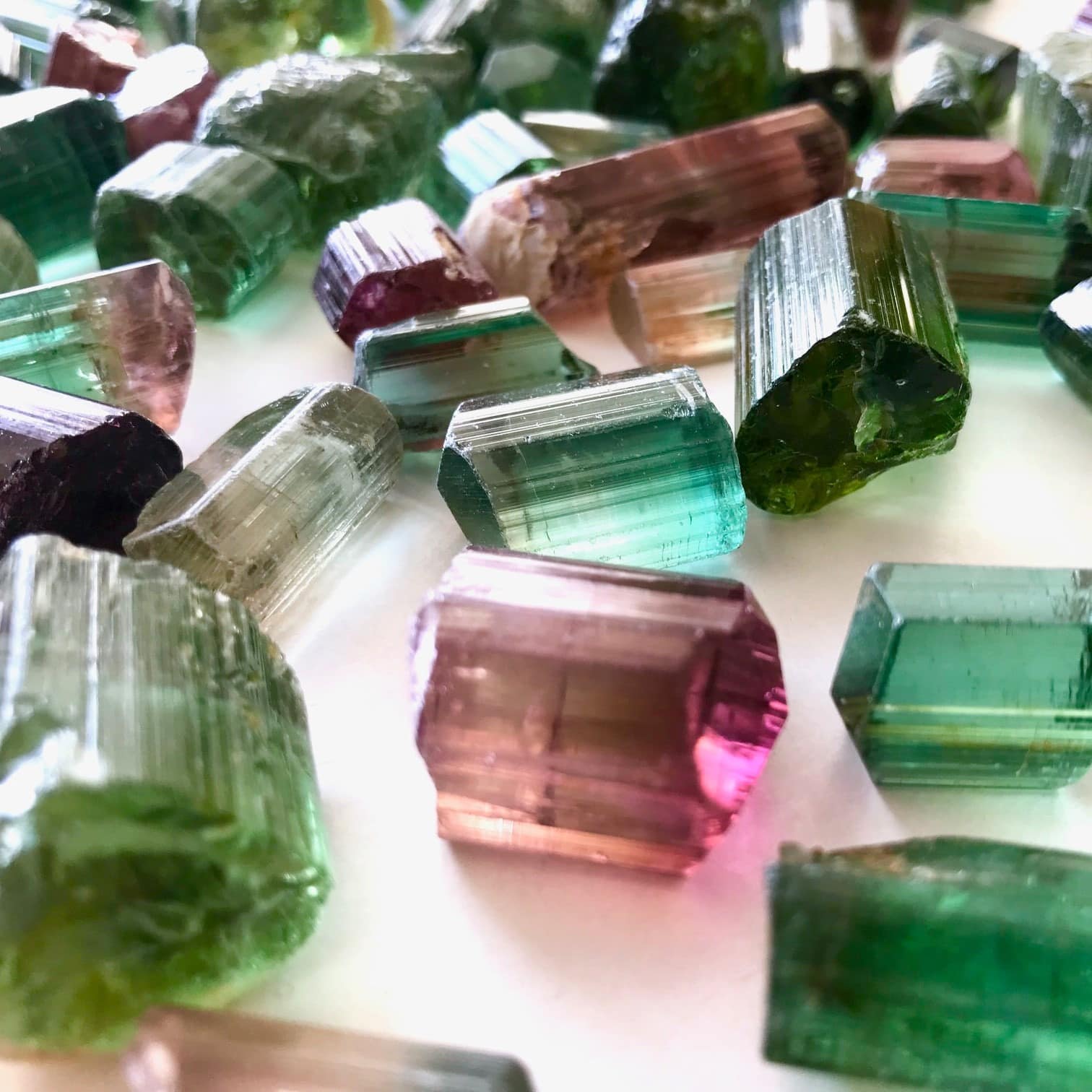Minerals fascinate me. For a long time I have admired them, but I do not collect them. For lack of space in my small flat in Abertivillar. But I like to look at them, to take the time to detail them, to handle them when it is possible and especially I am rather fascinated by the time of work necessary to the preparation of the specimens allowing those to reveal all the beauty that nature gave them. That’s why I wanted to meet the Wilenskys, whose New York gallery is a place of endless discovery of mineralogical wealth. Here, most of the specimens are for sale and the presentation chosen by the family is akin to that of an art gallery. The instagram account of the house feeds my imagination daily. So, I suggest you meet Stuart Wilensky who runs this beautiful house.
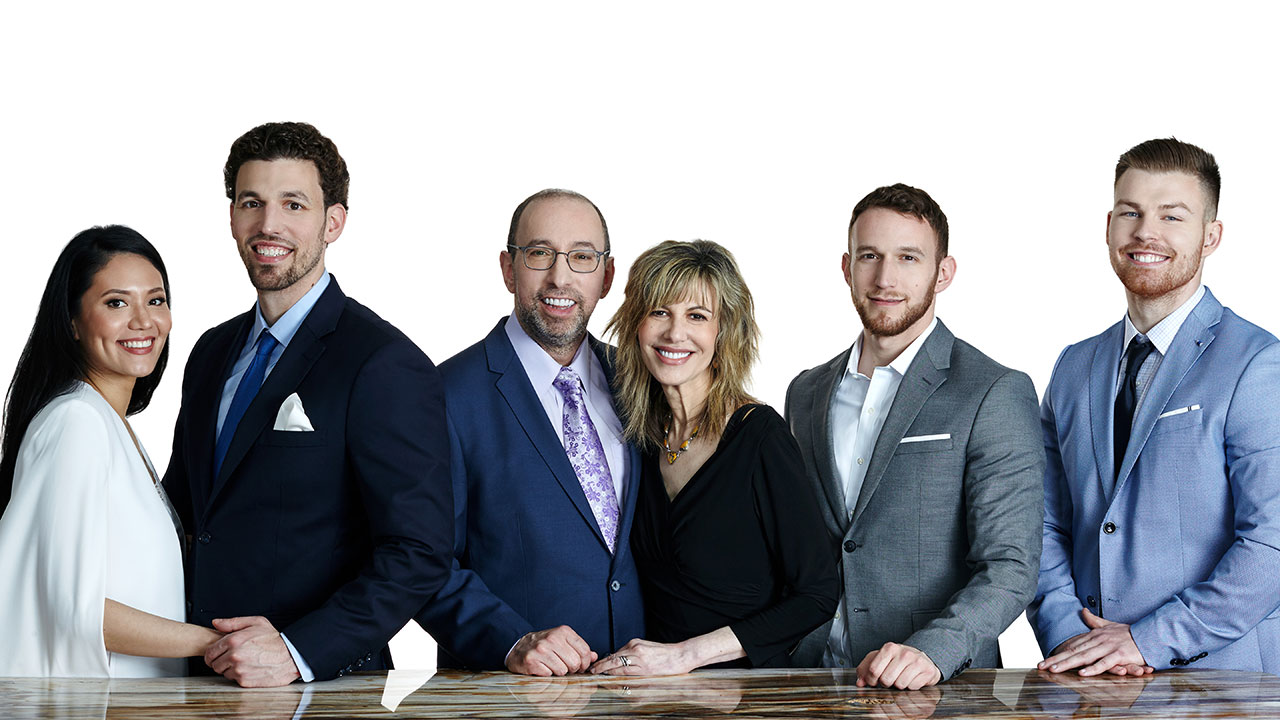
The Wilensky family. From left to right: Erica Wilensky, Troy Wilensky, Stuart Wilensky, Donna Wilensky, Connor Wilensky, Thomas Sullivan. Photo: Wilensky Exquisite Minerals
1- Hello Wilensky Minerals, can you introduce yourself to our readers?
Hi, I’m Stuart Wilensky, president and founder of Wilensky Exquisite Minerals and Wilensky Mineral Gallery. I started the business 35 years ago with my wife, Donna Wilensky. Together we built a small mineral buying business that we show in an international gallery in New York.
With my two sons, Troy and Connor, and my daughter-in-law, Erica, I opened the Wilensky Gallery of Exquisite Minerals in the heart of New York’s Chelsea Art District. The Wilensky Gallery showcases outstanding minerals among the world’s greatest art galleries, presenting minerals as works of art. Our goal is to show that minerals have a place in the art market. We work closely with collectors around the world to provide the best known examples of mineral specimens. Our role is multifaceted: we are advisors, experts and connoisseurs to our clients. We have published six books detailing and archiving many of the world’s most outstanding mineral specimens that have passed through our hands. We have also contributed to many important mineral collections around the world, including the MIM Museum in Beirut, the Houston Museum of Natural Science and the Peter Via Collection at James Madison University, as well as many private collections.

Fluorite with Sphalerite, Taolin Lead-Zinc Mine, Taolin, Hunan Prov, China. 20 cm wide x 19 cm tall. Photo: Wilensky Exquisite Minerals
2- What is the history of your gallery?
My parents were art and antique dealers who introduced me to the art world. As a teenager I travelled the world visiting museums and studying art. I earned a master’s degree in art history. Shortly after graduation, my wife, Donna, and I came across a collection of Arkansas quartz and polished agates at a flea market in Long Island, NY. We were immediately enthralled by the aesthetic beauty of nature and began to learn as much as we could about minerals. I was fortunate enough to meet Peter Bancroft at a local mineral show and purchased a signed copy of his book“Gem & Crystal Treasures“. We then acquired a complete set of the Mineralogical Record. Donna and I traveled the world visiting museums, shops and mineral shows. We started selling minerals in 1984 and two years later we attended our first mineral show in Tucson.
3- You are one of the largest sellers of rare and remarkable minerals. How do you get the specimens you offer?
Over the past 35 years, we have built strong relationships with suppliers and collectors around the world. These people know the quality we are interested in and will offer us pieces throughout the year. Whenever a new find is made anywhere in the world, miners or dealers are in contact with us so that we can acquire the best specimens discovered. We also develop links with mineral collectors, when they want to sell their collection, they contact us. Our greatest strength is that we treat all our relationships as friends, with respect and integrity.
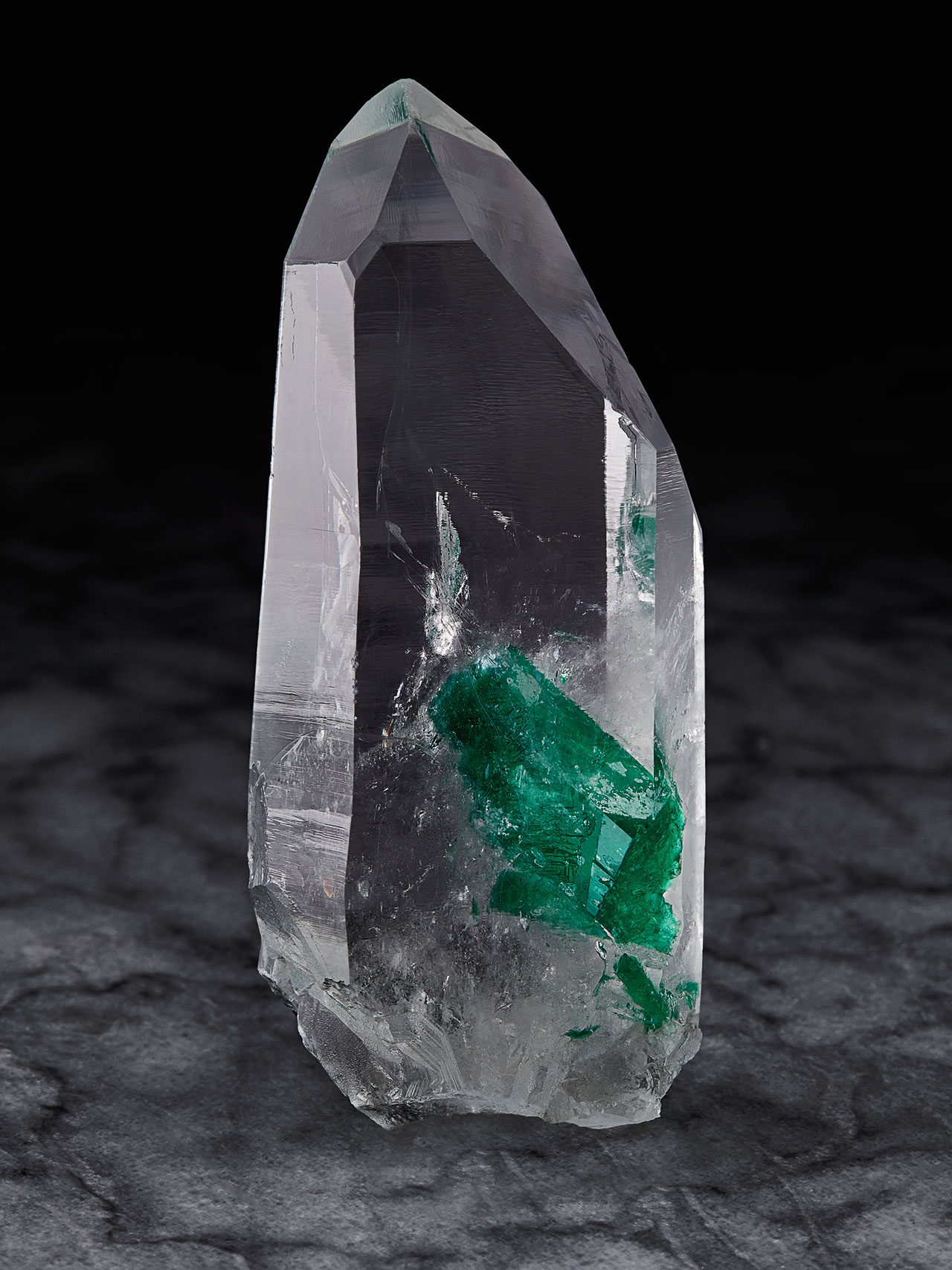
Emerald in Quartz, Muzo Mine, Muzo, Boyaca, Colombia. 7.3 cm tall x 3.1 cm wide. Photo: Wilensky Exquisite Minerals
4- Where did you learn about mineralogy?
I studied mineralogy and geology at university but it was not my main focus. My knowledge comes from decades of self-study; books, magazines, serious websites and museums. Much of my knowledge also comes from the generous help of many people I met along the way; collectors, dealers, miners and museum curators who were mentors, friends and colleagues.
5- Which specimen makes you most proud?
This is perhaps the hardest question you will ask me. I have been fortunate to own many specimens that I am really proud of. But there was one that was of particular importance to me. At my first show in Tucson, I saw an advertisement by Keith Proctor. Keith was one of the world’s top collectors and had many iconic specimens. One piece in particular struck me then. It was the famous Morganite on Tourmaline from the Blue Cap Mine which is considered the most important find ever made in California, perhaps even the United States. It was a dream come true to see it. That day in Tucson, I thought to myself, if I could ever own this specimen, it would mean that I had achieved all my professional goals. This piece transcended all others for me. It was not only the finest specimen of the world’s most remarkable minerals, it was more than that to me. Decades later, I was able to acquire the piece from the collector, Peter Via. I will never forget that day.
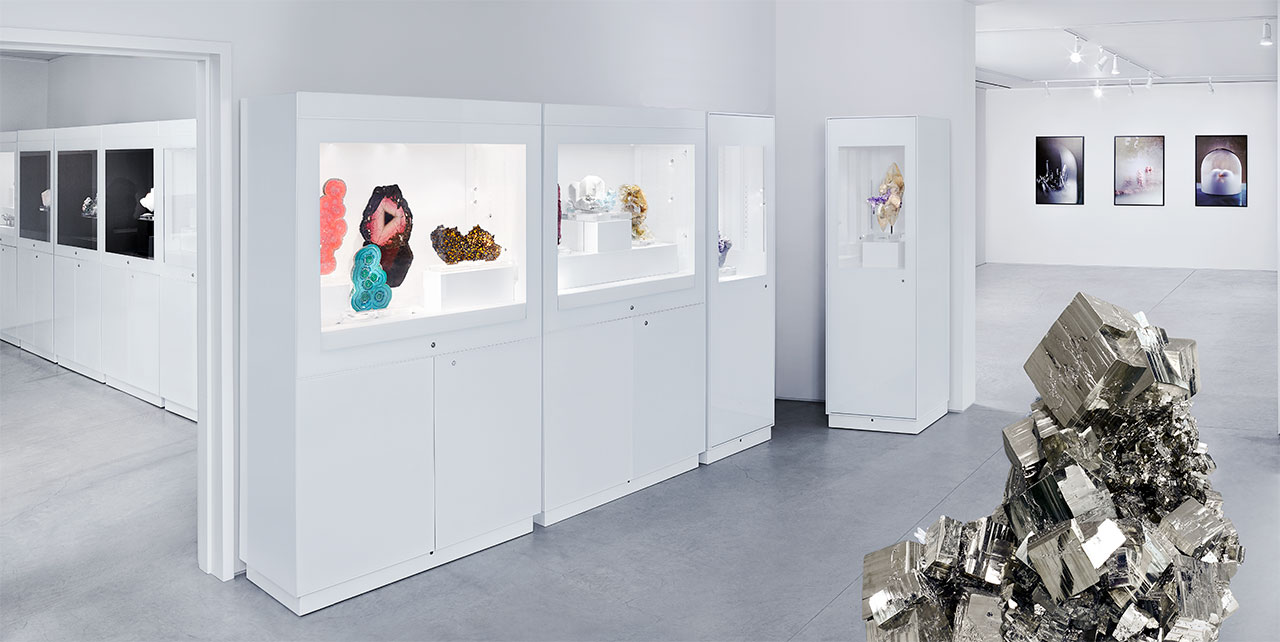
In the New York gallery. Photo: Wilensky Exquisite Minerals
6- Do you have any anecdotes for the readers?
When Donna and I started our business in 1985, like all mineral dealers, we would go to various mineral shows and set up our displays. We also had a small shop in a small town in upstate New York. About 5 years later, when we had two children, I was very concerned that I would not be able to generate enough income from selling minerals to raise a family. I was also working full time in my father’s antiques business. The new concept of producing video catalogues caught my attention. I spoke with Donna and we agreed that we should go ahead with the idea. We decided that if it didn’t work, we would give up the mining business. I took the family video camera down to my basement and several days later I had a video catalogue of about 75 specimens. Each specimen was filmed for about 1 minute, with my narration. I bought some mailing lists for mineral collectors and sent out a paper advertisement with a colour photo. We glued each photo by hand! People responded and we sent out about 50 video tapes in a week. By the end of the next week, about half the specimens had been sold! The video catalogue was a success. I then said to Donna, “I think we are going to be successful as mineral dealers.”
I had been producing about four video catalogues a year for many years. We had customers from all over the world receiving them and we had now built up a large list of regular subscriptions. At its peak, we were sending out several hundred videos. Over time, I built my own small video studio with more sophisticated equipment, several monitors, cameras and professional level recorders. I then moved on to DVD authoring and eventually created one of the first mineral websites in 1997. Then the web became the de facto method of communication, I stopped making videos and moved our business into this new virtual world. Ironically, with the opening of our NYC gallery, we are now back in the “real” world.
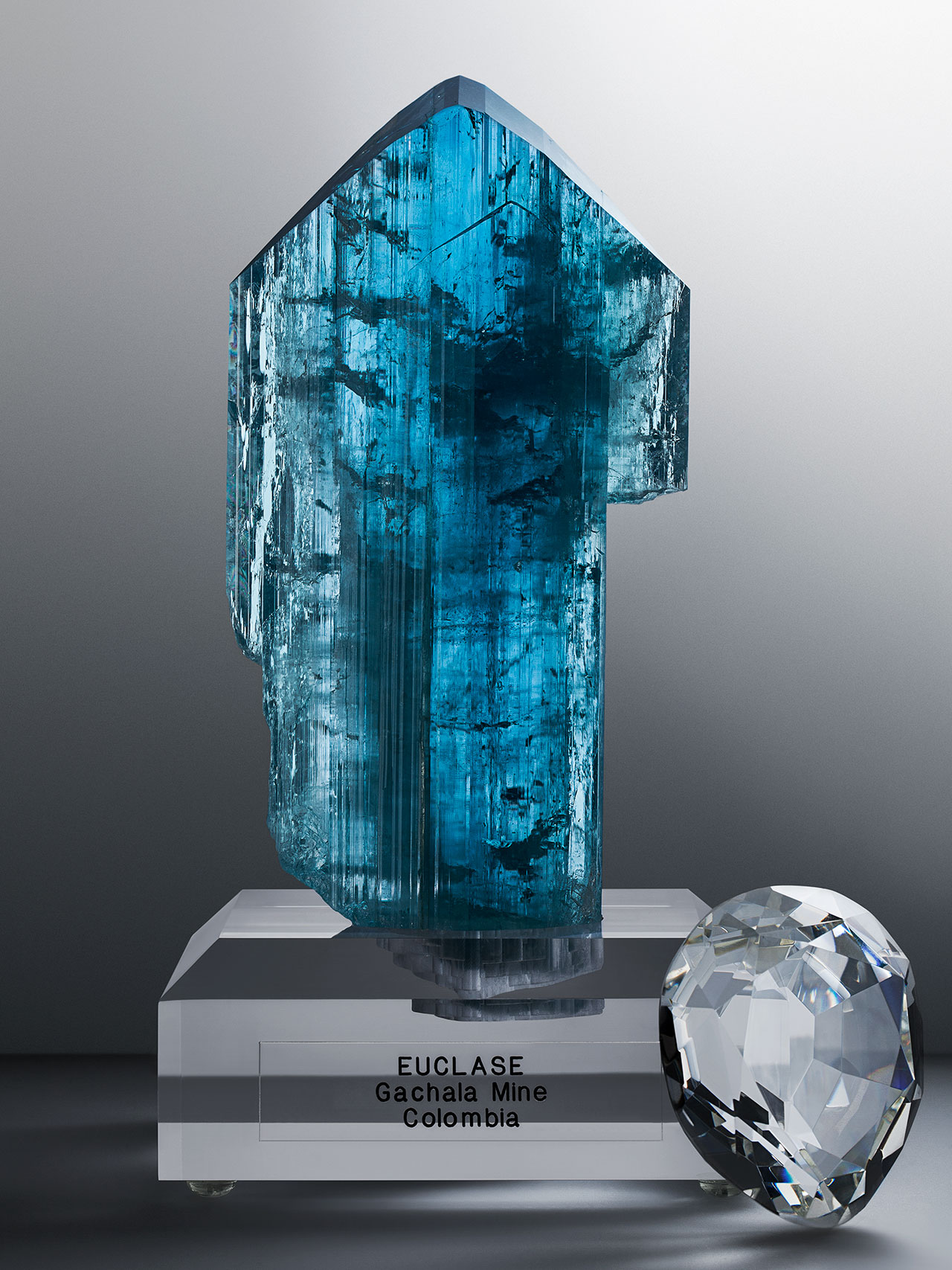
Euclase, Gachala Guavio-Guateque Mining Dist., Boyaca Dept., Colombia, 15.25 cm tall x 7.6 cm wide(next to a replica of the Cullinan I Diamond – 530 carats, Collection of British Crown jewels – to illustrate its enormous size ). Photo: Wilensky Exquisite Minerals
7- How do you choose the specimens? How would you define what is beautiful?
Choosing mineralogical specimens is something you develop over a very long period of time. It is like seeing a great work of art. You get to a stage where you feel it, you just know. But there is a process that I have developed, a system that you can follow to know if a specimen is “beautiful”, but more importantly, if it meets the criteria of a great mineral specimen.
Our speciality has always been large and perfect minerals. We look for minerals that have strong colours and/or strong colour contrast, ideal aesthetics and perfect natural balance. These qualities appeal to our innate sense of beauty. This way of seeing things transcends time and has been appreciated by people since we first created and appreciated art.
You can download two brochures here and here, explaining in more detail how the Wilensky Gallery chooses the minerals it exhibits.
8- What are your tips for starting a collection?
I have always advocated educating the eye before buying your first mineral. If you are new to minerals, we suggest building a library, probably by subscribing to both The Mineralogical Record or one of the many other mineral collecting magazines around the world. The web is an endless resource for learning. I think the most important thing is to get out and see the museum collections. Look at minerals, look at minerals and look at minerals. You will develop your own taste and follow that path. Don’t be intimidated by the scientific aspects of mineralogy. It is not at all necessary to be scientifically inclined to appreciate the beauty of minerals and crystals. Don’t worry much about “how do I know what species or crystal form a specimen is?”, this will come with time. If you let this appreciation develop, the rest will follow. Once you have fallen in love with minerals, dealers, museum curators and other collectors are very generous with their knowledge.
Follow your intuition. When you see a specimen that makes your heart beat faster – buy it! Always keep this in mind. I always think about it when I see a specimen for the first time. Did it make my heart beat? It’s a bit like falling in love. There are beautiful minerals in all price ranges. Don’t be intimidated by the high prices. It is better to buy one mineral you absolutely love than to buy five that are not as good. It’s better to spend all your money on one amazing piece than to spread it out over mediocre specimens. You’ll appreciate your collection more and more, and over time it will also become more valuable. Before adding a new coin, try to imagine the coin in the midst of your other acquisitions. Ask yourself if it fits, if you like it. Over time, you will develop your own style that will become the strength of your collection. Talk to dealers and show them what you like. A good dealer will show you pieces that fit your collection and will often hold them for you.
I always encourage collectors to look for those specimens that have no equal. They are special, unique and most importantly, memorable. Memorable must be the most important characteristic. When we walk through a museum, we see hundreds of works of art. A few days or weeks later, how many remain in our memory? Not many, but the most beautiful ones or those that have touched us intimately remain. The ones we remember will always be remarkable, because they have lasting meaning, beauty and value. We speak of them with respect.
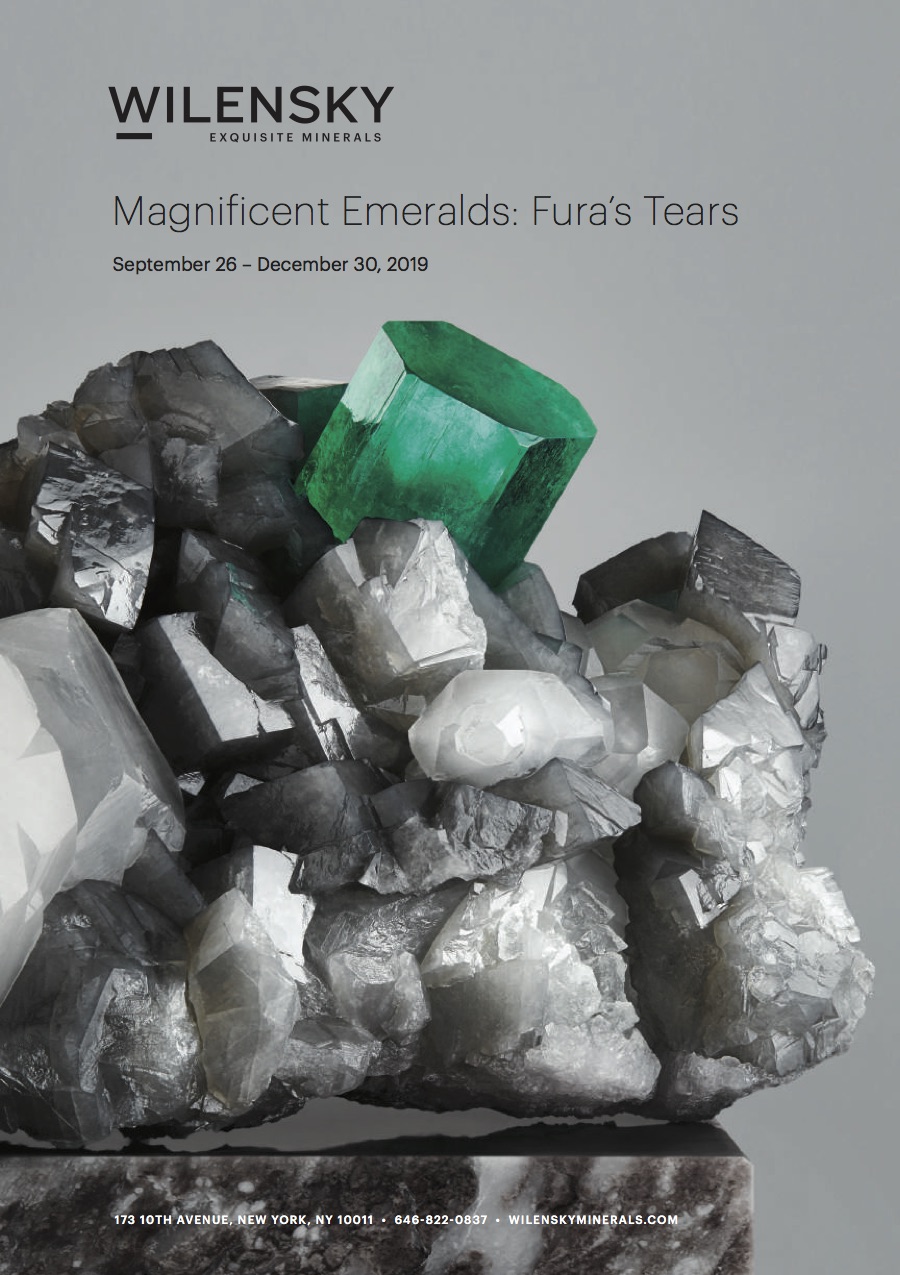
Poster for the fall 2019 Emerald exhibition. Photo: Wilensky Exquisite Minerals
9- Any tips for adding to or updating a collection?
Collections should be seen as an ever-changing entity. What you bought today may not be what you want in 10 years. So upgrade your collection as soon as possible. When you make a great discovery, don’t be afraid to buy it and trust your instincts. Assess your collection from time to time or ask a fellow collector or dealer for their opinion. Do I need this or that? Does this piece add to the collection? Collections do not have to be stagnant. They can grow, change and even decrease according to your goals.
10- You organise events around jewellery. What are your goals? Can we mix jewellery and mineral lovers? Are they the same customers?
When we opened our New York gallery, we were eager to try this new concept of mixing jewellery, gemstones, sculptures, etc. with natural mineralogical specimens. We had several shows where we invited artists and jewellers to participate. These were wonderful experiences and we really enjoyed meeting such talented people. We were able to share our love of minerals and stones like never before. By adding this to our gallery, we have introduced a whole new audience to minerals.

Rhodochrosite on Manganite, N’Chwaning Mine, N. Cape Province, South Africa. 5 cm wide x 5 cm tall. Photo: Wilensky Exquisite Minerals
11-Your New York gallery is really beautiful. It’s a different approach. When did you start seeing things in this way?
Thank you very much. It’s nice to read this kind of encouragement. Opening a gallery was something I had thought about for many years. It wasn’t until my children joined the business that I felt it was the right time to move forward with the concept. We started looking for a location five years ago. We officially opened its doors in April 2018. We never wanted to be just another traditional mineral shop. From the beginning, we wanted our gallery to showcase minerals like an art gallery. The area where our gallery is located is known as the Chelsea Art District. Within a twenty block radius, there are nearly 300 art galleries. All the most important galleries in the world are located within a few feet of ours.
12- How do you see the future of your house?
Our future is also the future of the way we collect minerals. We believe that they are the most natural art to collect. It is a market that has been growing for several decades now. We look forward to a future where mineralogical specimens will be among the world’s greatest works of art, in museums and private collections.
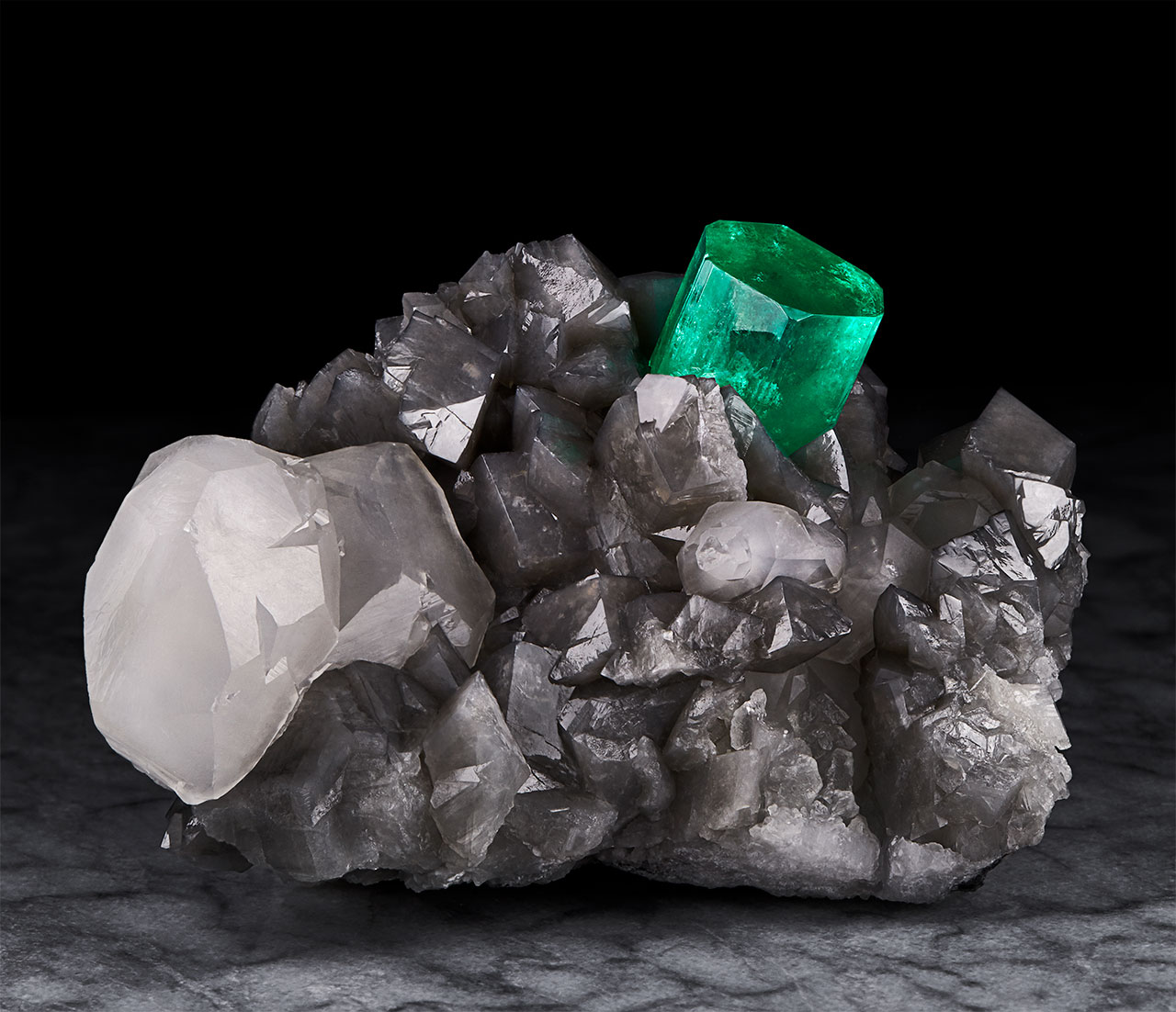
Emerald on Calcite, Muzo Mine, Boyaca Dept, Colombia. 5.8 cm tall x 8.9 cm wide. Photo: Wilensky Exquisite Minerals
We are planning a big exhibition called “Quartz Unrivaled”. The autumn exhibition will focus on some of the most beautiful quartz specimens known to man. It will include several famous pieces as well as many that are now hidden in private collections. We will produce a catalogue for the exhibition as we did for our previous emerald exhibition.
The exciting thing about having a gallery in New York is that we can put on large special exhibitions with the participation of the world’s leading mineral collectors as well as several museums. In our exhibition Emeraldexhibition, we displayed specimens from the Rice Northwest Museum and the Houston Museum of Natural Science. We are now working with the Perot Museum of Natural Science in Dallas to prepare an exhibit that will feature many of the world’s finest emeralds that were part of our exhibit last fall.
Looking ahead to 2021, we are planning a spectacular exhibition of the finest gold specimens. We are also planning other projects, such as the publication of a bi-annual magazine. It will feature the best specimens we have sold or donated as well as interviews with other collectors and museum curators. In this magazine we want to document the past as well as express what the future of mineral collecting will look like. Many of these ideas reflect the model we are developing in the gallery. With one simple goal, to move forward to include more people and to let them experience the wonder of mineral beauty.
See you soon!




